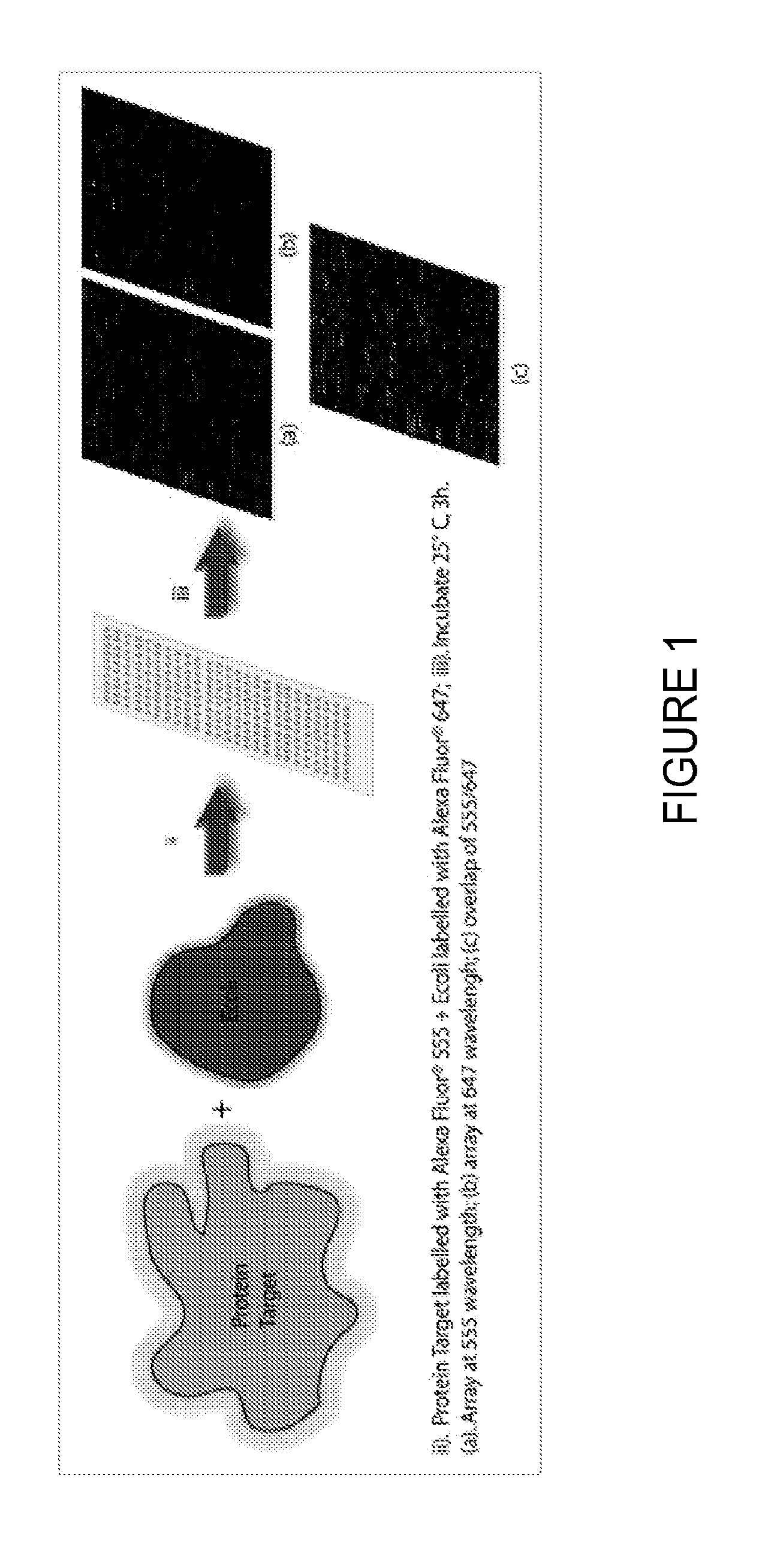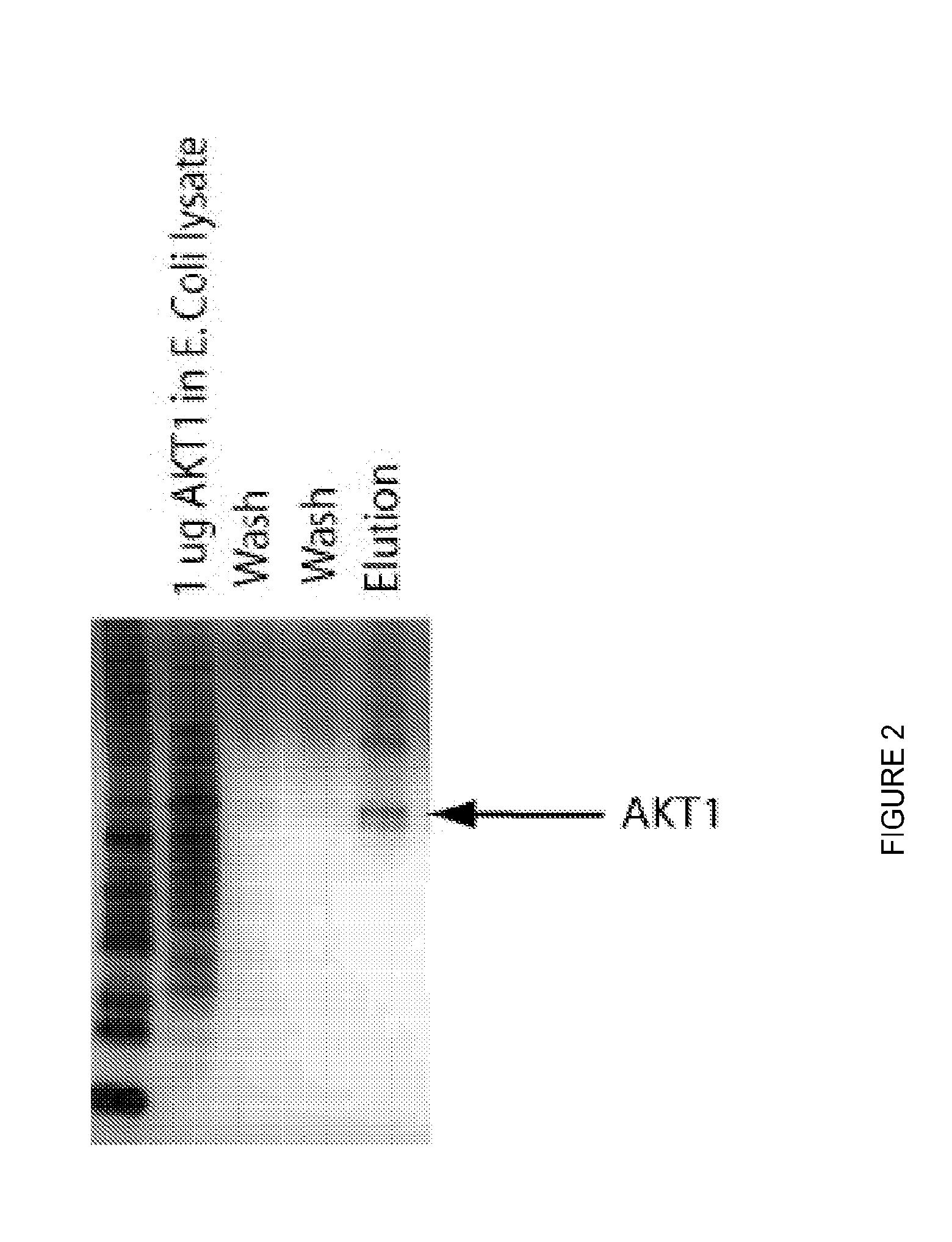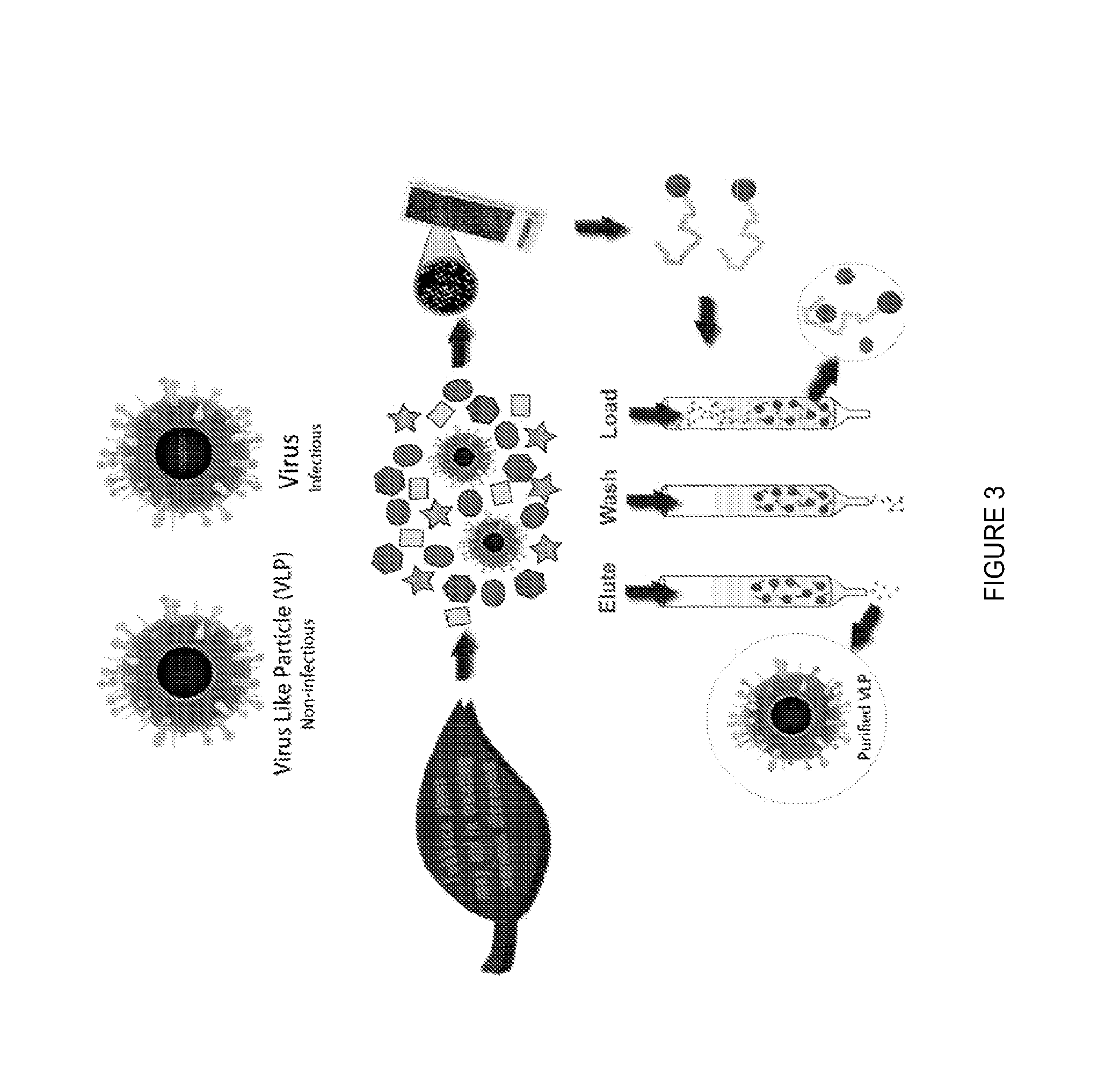Peptide ligands
a peptide ligand and peptide technology, applied in the field of peptide ligands, can solve the problems of inability to rapidly select peptide ligands, and inability to achieve rapid selection of peptide ligands, so as to reduce the high false positive rate, reduce the rate of false positives, and accelerate the effect of easy selection
- Summary
- Abstract
- Description
- Claims
- Application Information
AI Technical Summary
Benefits of technology
Problems solved by technology
Method used
Image
Examples
example 2
Peptide Ligand Screening
[0057]An E. coli lysate was labeled by reacting the N-hydroxysuccinimidyltetrafluorophenyl ester of ALEXA FLOUR® 647 with the primary amines in the lysate using the manufacturer's recommended protocol. Each of the target proteins shown below was similarly labeled using ALEXA FLUOR® 555.
Target ProteinCompetitor MixtureTFE. coli lysateAKT1E. coli lysateTNFAE. coli lysateFETE. coli lysateUbiquitinE. coli lysategp120E. coli lysate
[0058]The target and competitor were bound to the peptide ligands on the same slide with 100 nM of the target spiked into ˜100 fold excess competitor. Washes were performed with 1× TBST. Arrays were dried by centrifugation, and scanned on the PROSCAN ARRAY™ (PERKIN ELMER®) scanner at 555 and 647 nm and 70 PMT.
[0059]Using this technique, several ligands were identified with affinities for their target proteins in the micromolar range.
[0060]To further improve the affinities of the various peptide ligands, they were coupled to solid support...
example 3
Norovirus
[0065]nVLP production: N. benthamiana (tobacco) plants were infiltrated with an Agrobacterium Ti plasmid encoding norovirus capsid protein according to known techniques. Biomass was harvested at 6 days post-infiltration and extracted using a GREEN STAR™ juicer and extraction buffer (25 mM sodium phosphate, 100 mM NaCl, 2 mM PMSF, 50 mM ascorbic acid, plus a PROTEASE INHIBITOR TABLET™ (SIGMA-ALDRICH®), pH 5.75).
[0066]The extract was incubated on ice for a minimum of 1 hour followed by centrifugation at 6,000×G for thirty minutes. The supernatant was filtered using a 0.8 / 0.2 micron capsule filter. The extract was incubated at 4° C. for 36 hours and the centrifugation process repeated as before. The extract was further incubated at 4° C. for 24 hours and the centrifugation process repeated again. The pH of the supernatant was adjusted after the third centrifugation to 7.30 using 0.25 M sodium phosphate and the centrifugation repeated again.
[0067]The final supernatant was conce...
PUM
| Property | Measurement | Unit |
|---|---|---|
| equilibrium dissociation constants | aaaaa | aaaaa |
| pH | aaaaa | aaaaa |
| concentration | aaaaa | aaaaa |
Abstract
Description
Claims
Application Information
 Login to View More
Login to View More - R&D
- Intellectual Property
- Life Sciences
- Materials
- Tech Scout
- Unparalleled Data Quality
- Higher Quality Content
- 60% Fewer Hallucinations
Browse by: Latest US Patents, China's latest patents, Technical Efficacy Thesaurus, Application Domain, Technology Topic, Popular Technical Reports.
© 2025 PatSnap. All rights reserved.Legal|Privacy policy|Modern Slavery Act Transparency Statement|Sitemap|About US| Contact US: help@patsnap.com



